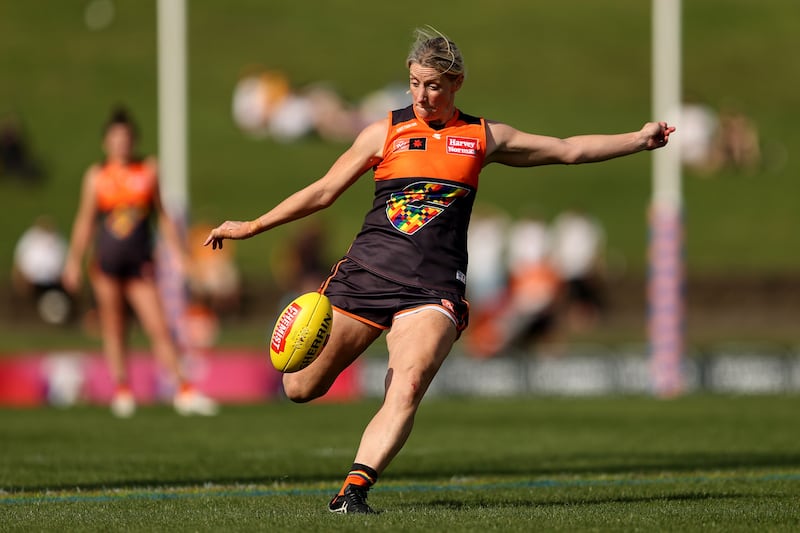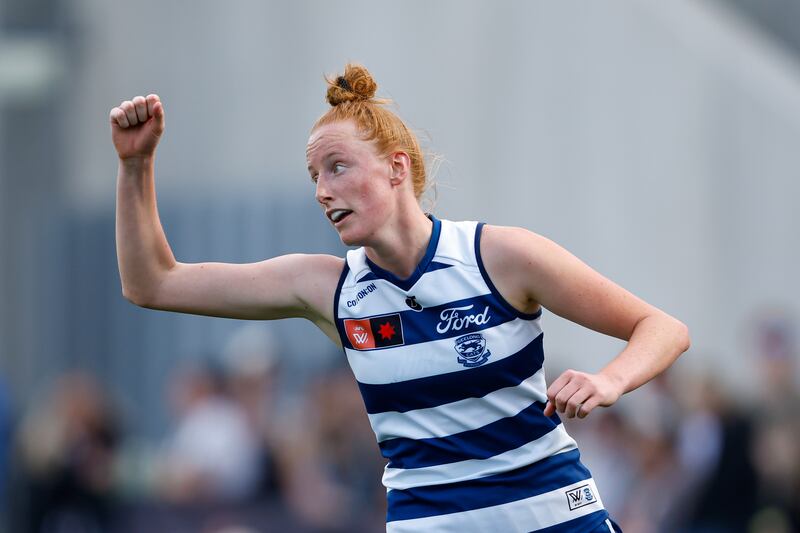Everywhere you look, more emerge.
At Brisbane, Orla O’Dwyer, Ireland’s first AFLW All-Australian. Behind her in the Lions’ defence, Jennifer Dunne, fresh off an All-Ireland title with Dublin.
In total, a record 33 Irish players are competing in the AFLW this season, with eight players likely to see the field in the preliminary finals this weekend.
Dunne’s possible direct match-up against Geelong? Who else but Aishling Moloney, the towering forward from Tipperary. They know each other well. Moloney also happens to be Dunne’s former teammate at Dublin City University.
Inside Gaelic Games: The weekly GAA newsletter from The Irish Times
Cork’s red mist gave Clare chance to make the numbers count
Seán Moran: Sobering question for the GAA - does intercounty involvement do players more harm than good?
Leinster excel when it comes to refining link between attack and defence
In fact, the closer you delve, the more connections you find. Alongside Moloney at the Cats is Rachel Kearns, a teammate of Adelaide’s Niamh Kelly at Mayo. At Tipperary with Moloney? The aforementioned O’Dwyer, as well as Niamh Martin at the Kangaroos.
The links may be dizzying, but the impact of Irish players on the AFLW is clear.
Cork’s Erika O’Shea, 21 games into her AFLW career at North Melbourne, says the performances of the Irish influx have established a collective identity.
“All the girls in my team always say the speed and aggression, the will to win, this competitiveness,” she says. “They love that, and I think that’s what we bring to the game.”
The so-called Irish experiment in men’s Aussie rules was driven by the likes of then Melbourne coach Ron Barassi in the 1980s, and by its greatest success Jim Stynes. Gaelic football skills, it proved, translated to the Australian game. The tradition has been upheld by the likes of Sydney’s Tadhg Kennelly and Geelong’s Zach Tuohy in recent years. But even their impact has been eclipsed by the growing Irish injection in the women’s competition.
The trickle started with pioneering former Demon Laura Duryea (formerly Corrigan) and Mayo great and GWS Giant Cora Staunton in the first two seasons of the competition. But it has become a deluge. After challenges travelling during Covid, the league’s tally has jumped from 22 Irish players last season, to 33 for the current campaign.

Mike Currane, an Ireland-based talent identifier and intermediary between AFL clubs and Gaelic talent, says the players that came in last year – including O’Shea and former Kangaroos’ teammate Vikki Ward – showed that their skills could offer clubs immediate returns.
Rather than long-term projects, recent arrivals proved to be ready-made AFLW players. “Because all those players made such an instant impact, more and more of the clubs realised that the Irish players had a huge plus side,” Currane says.
Martin – one of four Tipperary players still in finals – joined the Kangaroos this year and had an abbreviated preseason but forced her way into the side in round seven.
“I was just training away, getting to know the game and the vocab that goes along with it,” she says. “We kind of kick around our body so it was hard to get kicking straight on, but I spent lots of time kicking with senior coach Crock [Darren Crocker]. But now he’s letting me go back to my instincts, to try and get the right balance between the Aussie style and the Gaelic football style.”
Every player has a different Aussie rules origin story. Some participated in training sessions in Ireland with Currane. Some were recruited based on their performances with the round ball alone. Others just happened to be in Australia.
Cats defender Kearns was visiting Collingwood player Sarah Rowe on holiday when she received a message on Instagram from a Geelong representative. “I was kind of like, ‘oh it’s a scam,’ so I left it there for like a day and then I was like, ‘I’ve actually no interest in playing this game,’” she says. “And then Sarah was like, ‘just go.’”
Although Gaelic football offers only an amateur competition, and players on AFLW contracts are paid on average $60,000 for the season, the choice remains difficult.
Geelong forward Moloney was originally approached by Brisbane – her opponents this weekend – in 2018, but at that stage she wanted to concentrate on her studies. A year later the Cats made contact.
“At that time I was just like, ‘I’ve got no interest in this,’” Moloney says. “I kept putting it off in the last few years, then eventually I thought I’d give it a bit of a go, and I’m delighted I did.”

More than 5 per cent of players on AFLW lists are now Irish, and the recent trend suggests growth could continue. However, Currane believes the overlap between the Gaelic calendar and the increasing length of the AFLW season – it could extend to as many as 14 matches plus finals in coming years – means the Irish proportion of playing stocks is unlikely to grow much further. Then there’s the rapid improvement of player development in Australia.
“There’s amazing young players coming through all of the pathways and academies that simply weren’t there when the competition started,” he says. “The initial clubs came to Ireland because there was that gap in the talent pool, but now, that talent pool has filled up.”
For those that have made their way here, the shared experience has tightened their connections – even those without clubs or counties in common.
O’Shea came to Australia last year as a 19-year-old – the youngest Irish import – but was quickly taken under the wing of her countrywomen, including Kelly, an opponent on Sunday.
“She’s been so good to me since I moved out here, and her sister [St Kilda player Grace Kelly] is the same,” O’Shea says. “They really looked out for me since I came out here because they knew how young I was when I came out first, and they knew I didn’t have anyone.”
The bonds between Irish players mean that even though three clubs will face defeat over the next two weeks, they will all share in each other’s success.
“I was actually on to Orla [O’Dwyer] earlier, looking for tips for mum and dad who are up there in Brisbane during the week,” Moloney says. “We have a great relationship with them and, you know, we wish them every success at the weekend as well.” - Guardian













